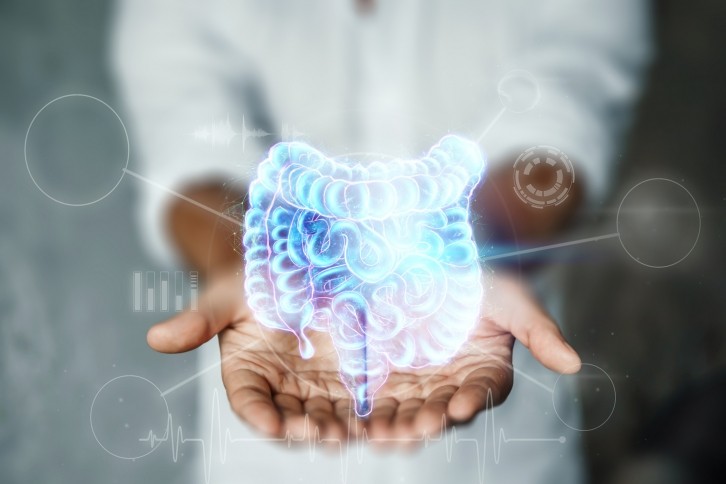Differences between small and large intestine vital for probiotic precision

Published by the International Life Sciences Institute (ILSI) Europe, a non-profit organisation that publishes peer-reviewed studies on nutrition and food safety, the report underscores the need to distinguish between the two segments of the intestinal tract in gut microbiota research.
Research on gut microbiota has generally focused on faecal samples, representing the luminal content of the large intestine yet nutrient uptake is restricted to the small intestine (SI).
As the gateway to nutrient absorption and a hub of intricate host-microbe interactions, the small intestine is emerging as a focal point for research, as the review explains.
The authors note that it is crucial to dissect key differences in both ecology and physiology between small and large intestine to better optimise probiotic administration and harness their therapeutic potential in the right place, at the right time.
Lead author and expert group chair Benjamin Anderschou Holbech Jensen from the University of Copenhagen explains: “The small intestine is characterised by highly dynamic microenvironments where the loosely adherent mucus layer exposes the luminal surface to intricate host-microbe interactions.
"To leverage the full potential of microbiota modulation, we suggest putting microbial dynamics and host-microbe interactions in the small intestine, rather than in the colon, as a focal point for future research."
Key insights
Previous studies have demonstrated the existence of different microbial communities along the human GI tract, with research confirming this through ingestible capsule devices to sample multiple regions of the GI tract in 15 healthy individuals during normal digestion.
The authors suggest this is where the most important implications for the use of probiotics lie.
“Not only are there substantial differences in the individual microbiota composition, hence posing different levels and types of competition with the probiotic administered, there is also compositional variation along and across the GI tract, which may determine where a probiotic exhibits its main activity.”
The report notes that, from a functional perspective, the small-intestinal microbiota—ranging from 104–105 microbes/mL in the duodenum to 107–108 microbes/mL in the ileum—consists of fast-growing, primary fermenting bacteria, such as lactic acid bacteria and enterobacteria, and secondary fermenting bacteria, such as Veillonella, which grow on the lactate produced by primary fermenters.
Research suggests rapid uptake and conversion of simple carbohydrates drive the microbial ecosystem in the SI.
This contrasts with the colonic ecosystem, which is driven by the conversion of complex carbohydrates.
“A likely explanation is the enormous difference in transit time between the small and large intestine combined with the continuous removal of nutrients by the small-intestinal epithelium during transit,” explains the report.
The small and large intestine also have a different PH which is important because it impacts what will survive in the environment.
PH varies not only along the GI tract but also horizontally, where the ventricle is protected by a diffusion barrier enabling luminal proton concentrations to exceed the concentrations at the epithelial surface by >1 million-fold.
The authors explain: “This, together with oxygen fluctuations shaping the epithelial barrier along intestine, is paramount for compartmentalised microbial colonisation, nutrient digestion, and host metabolism.”
The authors note that when developing probiotics for the small intestine, it's crucial to consider these unique conditions.
They state: "The abundant immune cell populations in the small intestine, combined with limited mucus secretion and looser junctions, allow for efficient fluid and nutrient absorption.
“These factors result in intimate host-microbe interactions, despite rapid transit time.”
Improvements in research
The authors state that the administration of natural or designer probiotics that carry relevant enzymes may help to prevent unwarranted immunity toward the gut microbiota and facilitate physiological processes such as lactose degradation in otherwise intolerant subjects.
They note that emerging research points toward advanced microbial therapeutics (AMT) as a promising strategy to alleviate human disease traits, a key concept of which is microbial engineering.
They explain: “Although bacteria are attractive tools for genetic modulation, the eucaryotic nature of probiotic yeasts offers additional opportunities for complex expression systems, including post-translational modifications, resistance to antibiotics, and advanced containment systems.”
Jensen explains: “The development of affordable sequencing techniques, advanced culturing methods, and multi-omic strategies has propelled the research on host-microbe interactions into new dimensions.
“Still, while there is a substantial and needed push to move from association studies to mechanistic causality, our current knowledge remains limited to faecal samples and colon biopsies. This is a paradox, as many probiotics are targeting the small intestine by e.g., affecting nutrient absorption.”
The researchers note the need for improved tools for studying the upper GI tract.
“There is a need for tools such as capsule systems to study the intestinal microbiota in the upper GI tract,” they conclude.
“In vitro and in vivo models provide substantial opportunities to study the interaction between the intestinal microbiota and various organ systems. However, these models need to be further developed, particularly to increase translatability.
“Finally, to improve our understanding of the mechanisms of probiotic action in general and in the SI in particular, our knowledge of the intestinal microbiota and its activity needs to be expanded beyond the colon to also include the upper parts of the GI tract.”
Journal: Cell Reports Medicine
“Small intestine vs. colon ecology and physiology: Why it matters in probiotic administration”.
Authors: Benjamin Anderschou Holbech Jensen, Marc Heyndrickx, Daisy Jonkers, Alan Mackie, Sam Millet, Malwina Naghibi, Simone Isling Pærregaard, Bruno Pot, Delphine Saulnier, Christian Sina, Luc Gerardus Willibrordus Sterkman, Pieter Van den Abbeele, Naomi Vita Venlet, Erwin G. Zoetendal, and Arthur Constantijn Ouwehand.












